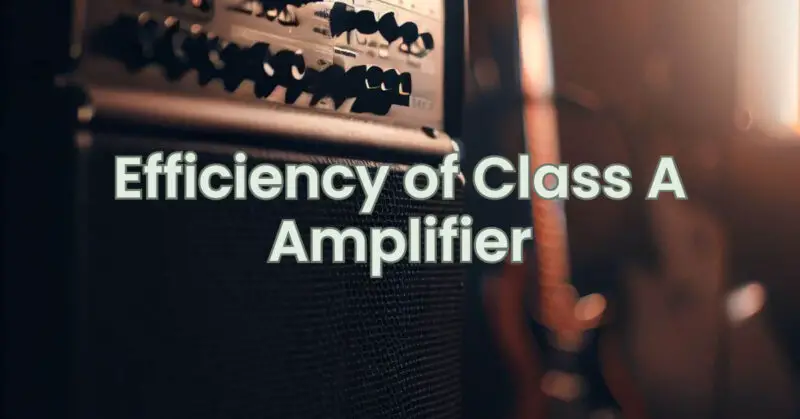Class A amplifiers are renowned for their exceptional sound quality and accuracy. However, one of the trade-offs of their superior audio performance is their relatively low efficiency compared to other amplifier classes. In this article, we will explore the efficiency of Class A amplifiers, examining their operating principles, power consumption, heat dissipation, and potential efficiency improvement techniques. By understanding the efficiency characteristics of Class A amplifiers, you can make informed decisions when considering their use in your audio system.
Operating Principle: Class A amplifiers operate in a mode where the output transistor remains biased to conduct continuously, regardless of the input signal level. This continuous conduction ensures that the output transistor is always in its active region, minimizing distortion and maximizing linearity.
Efficiency Calculation: Efficiency is defined as the ratio of output power to input power. In Class A amplifiers, the output power is directly proportional to the input power, as the output transistor is always conducting current. Therefore, the efficiency of a Class A amplifier can be calculated as:
Efficiency = (Output Power / Input Power) * 100%
Since the output power is equal to the input power in Class A amplifiers, the efficiency is theoretically 50%. This means that 50% of the input power is delivered to the load, while the remaining 50% is dissipated as heat.
Power Consumption and Heat Dissipation: One of the primary drawbacks of Class A amplifiers is their relatively high power consumption. As the output transistor is continuously conducting current, even when no audio signal is present, significant power is consumed regardless of the output level. This continuous power consumption results in substantial heat generation.
The heat dissipation in Class A amplifiers is a significant consideration. Adequate heat sinking and cooling mechanisms are necessary to dissipate the excess heat generated during operation. This not only ensures the amplifier’s performance but also prevents thermal damage to the components.
Improving Efficiency: While the inherent design of Class A amplifiers limits their efficiency, there are techniques to enhance their efficiency without compromising sound quality. These techniques include:
- Class AB Biasing: Class AB amplifiers combine elements of Class A and Class B designs. By slightly altering the biasing of the output transistor, Class AB amplifiers allow a small amount of current flow when no signal is present, reducing power consumption and improving efficiency.
- Push-Pull Configuration: Implementing a push-pull configuration in Class A amplifiers can enhance efficiency. This configuration utilizes a pair of complementary output transistors that handle the positive and negative halves of the audio waveform, allowing for more efficient use of power.
- Switching Power Supply: By incorporating a switching power supply, Class A amplifiers can achieve higher efficiency. A switching power supply operates by rapidly switching the input power, significantly reducing power losses and increasing overall efficiency.
Class A amplifiers are revered for their outstanding sound quality and accuracy, but their efficiency is relatively low compared to other amplifier classes. The continuous conduction of the output transistor results in significant power consumption and heat dissipation. However, by implementing techniques such as Class AB biasing, push-pull configurations, and switching power supplies, it is possible to improve the efficiency of Class A amplifiers without compromising their sound quality.
When considering the use of Class A amplifiers in your audio system, it is essential to evaluate your priorities, weighing the importance of sound quality against power consumption and heat dissipation concerns. By selecting appropriate cooling mechanisms and optimizing the amplifier’s design, Class A amplifiers can deliver exceptional audio performance while mitigating efficiency-related challenges.


